It's About Time #5: Impulse Response
A series of blog articles about Time Alignment
26 June 2024
Technical Articles
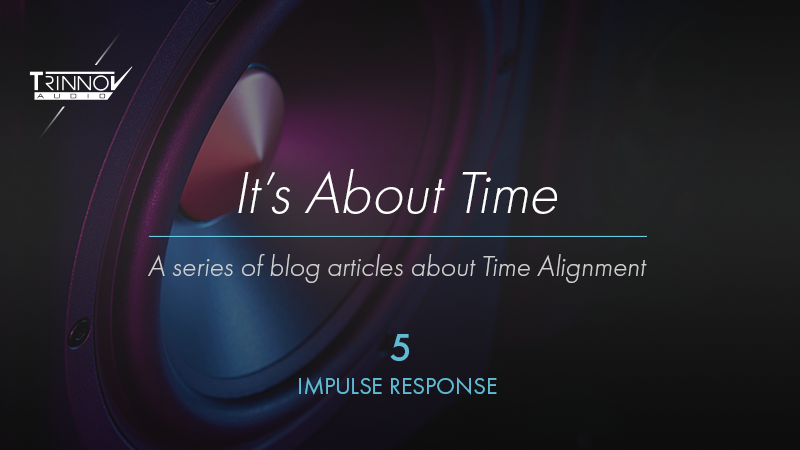
In this final article of the It's About Time series, we will see that time domain is extremely important not only among multiple speakers but also within the different frequencies of each speaker itself.
Conventional speakers use multiple drivers to reproduce the full range of sound the speaker is designed to handle. These drivers all have varying time-domain characteristics and they are tied together with crossover networks that themselves have different time-domain effects.
The Trinnov Speaker/Room Optimizer builds upon the strengths of a speaker in a number of ways. One of the most important improvements it can make is in the time domain, making sure that all the various frequencies arrive at the listening position at precisely the correct time. Technically speaking, the “impulse response” of uncorrected systems are poor, which has a variety of deleterious effects:
- Timbre inaccuracies due to the compromised response around the crossover frequencies (example: it become more difficult to tell whether it is a Martin or a Gibson guitar)
- Loss of clarity, particularly around the crossover frequencies, which leads to poor dialog intelligibility and poor detail in general (“what did that actor just say?”)
- Hearing the speakers as identifiable sources of sound rather than presenting a seamless, three-dimensional soundfield (since they are not working together as they should).
Imagine feeding a short transient into a speaker, like our Pulse signal. The signal would sound like a short “tick” and would be represented as follows:
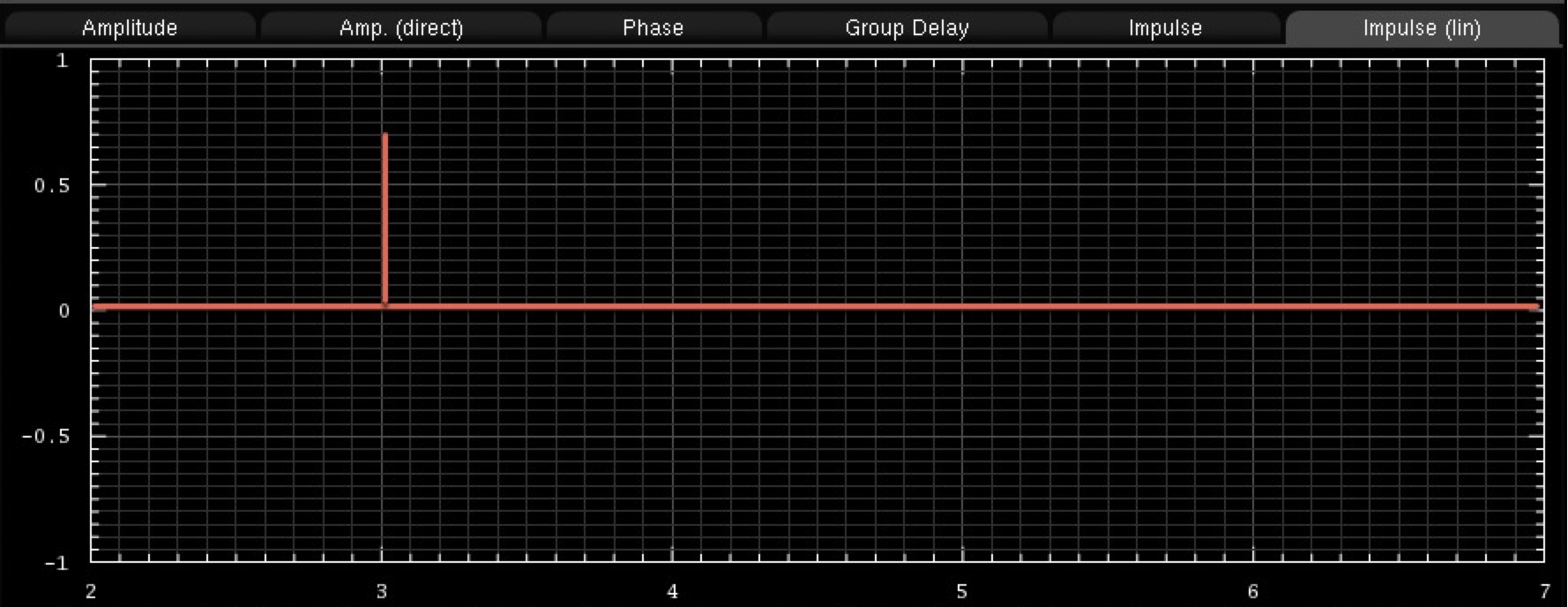
Impulse response of a transient
Ideally, at the (arbitrary) 3ms mark, all of the drivers in the speaker would quickly move forward and then immediately back to their resting position in perfect unison, without any hesitation or overshoot. Of course, in the real world, they have inertia and suspensions that act like springs. No speaker reproduces this impulse perfectly, but some get closer than others.
To give you some idea, let’s look at some real-world measurements of excellent loudspeakers. The screen channels are all identical in this case, so the “Before” responses at the top are quite similar; however, we can improve upon the strengths of this speaker by comparing the input signal to what returns to us from the microphone. By definition, any difference between input and output is a form of distortion. So we carefully measure that distortion and “pre-distort” the signal we send to the speaker in an equal-but-opposite manner so as to force the speaker to behave itself better. This is what you see in the “After” curve below:
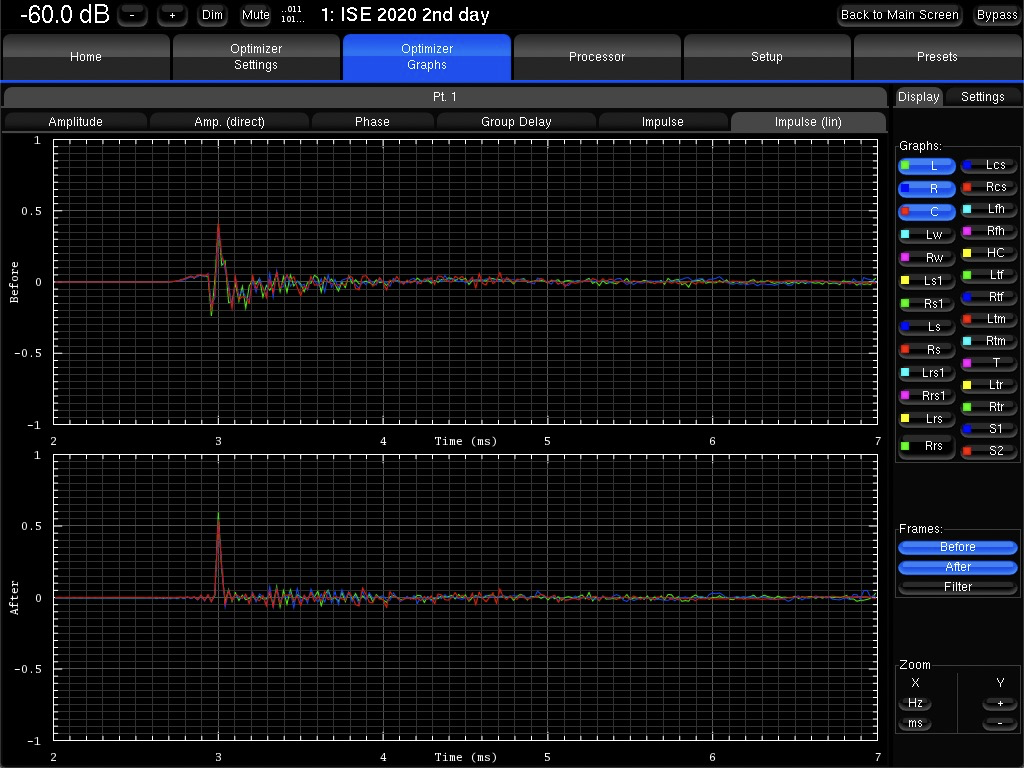
Before vs After optimization with LCR speakers
Looking at these results, you can see that the screen channels (L, C, and R) exhibit a couple of small overshoots, but they settle down quite quickly. It is even more controlled in the After curve at the bottom of the screen capture.
Let’s add the Wides and the Surround speakers (sides and rear surround speakers) from a basic 9.1 configuration:
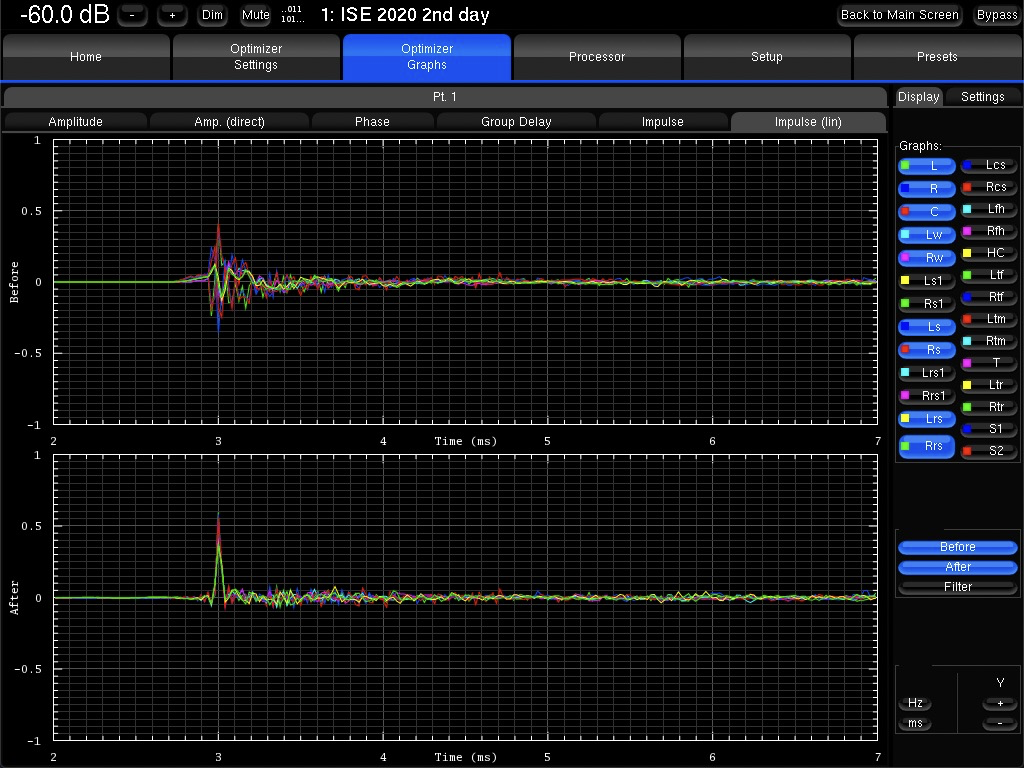
Before vs After optimization with 9.1 configuration
You can see here that the Before result is beginning to look a bit confused, with different speakers responding differently to the same input signal. This is because they are smaller speakers using different drivers and crossovers. There are bound to be some time-domain differences. To understand this problem, imagine how poor the imaging would be if you listened in stereo to two speakers, each from a different manufacturer – you would not hear a seamless, wall-to-wall image but, rather, two speakers making similar sounds.
After the Optimizer does its work (in both the amplitude and the time domains), the transient is more clearly defined and better damped. In our stereo imaging analogy, it again looks like you have matched speakers creating your sound. Their similar (and more nearly-ideal) performance means they can work together to create sounds that appear to come from in between the actual speakers. As you can see from the colorful buttons near the top-right corner, this system has quite a few speakers in it. As such, you would hope for a seamless, high spatial resolution “bubble” of sound all above and around the listener. Let’s add in the rest of the speakers:
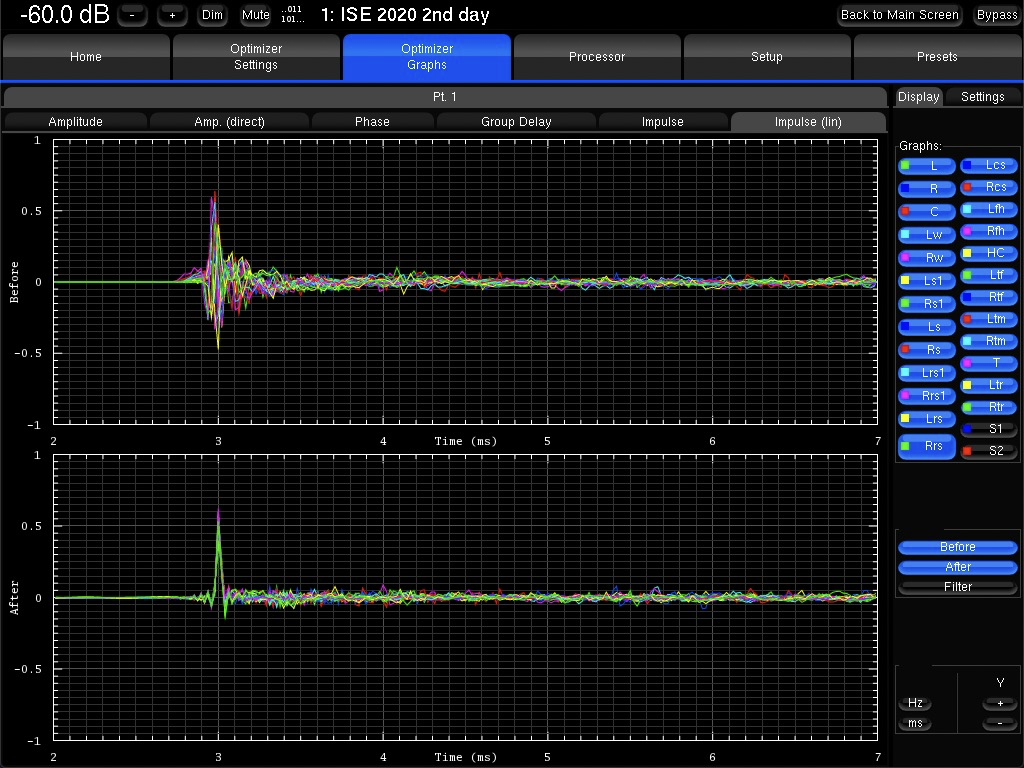
Before vs After optimization with multiple speakers
The result is greater clarity, dialog intelligibility, and the convincing, seamless “bubble” of sound that is a hallmark of Trinnov systems, thanks to our patented and exclusive Optimizer technology.
The Optimizer is found in all Trinnov line-level products, which are found in recording studios for both music and movies, post-production houses, dubbing stages, commercial theaters, high-end stereo systems, and high-performance home cinemas. Audio professionals around the world depend on the Optimizer to help them hear precisely what is in their mixes prior to finalizing them. You can, too.
Now, recall that these are unusually good speakers. Even so, the Before curve looks like a bit of a train wreck, with different speakers responding quite differently to the same input signal. But, after our time-domain correction, all of the drivers in all of these speakers are working together in a far more consistent and coordinated way.

Summary
Audiophiles and audio professionals alike sometimes become confused over the various ways in which time becomes a critical factor in the performance of a high-quality audio system. As with so many subjects, people tend to reinforce their existing ideas about how the world works rather than doing the difficult work of understanding other possibilities.
We hope that this series of articles helped you understand why two systems that have been equalized to have the same (amplitude) response can ultimately sound quite different, and at least some of the reasons why some otherwise excellent systems can sound so much more like real life than others.
If you would like to learn more about how the time domain affects how we perceive the world around us, consider reading Spatial Hearing by Jens Blauert:
Related articles:
It's About Time Series #1: Introduction

